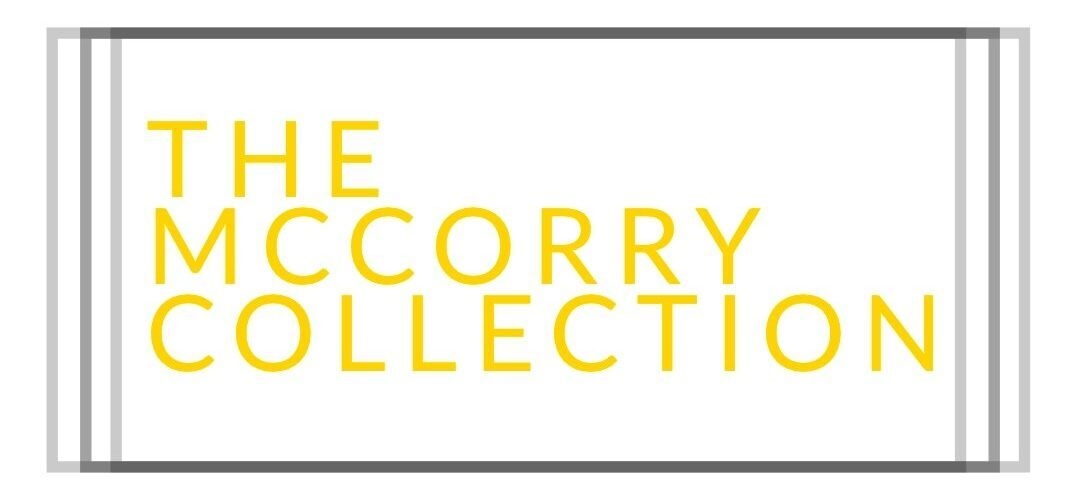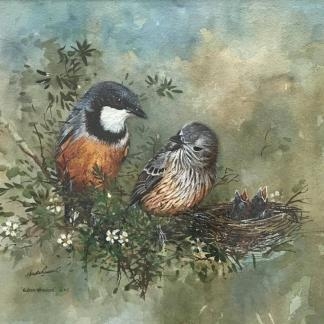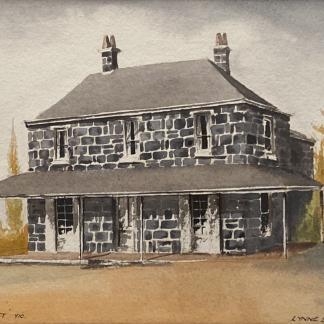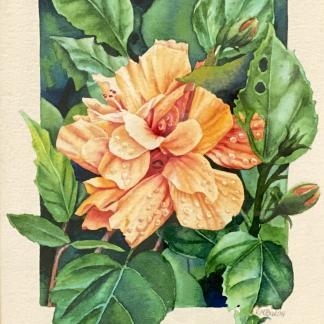Bio & Information
Arnulf Ebatarinja (Australian Aboriginal 1931-) Bio
Arnulf was a Western Arrernte man born in 1931, he was a nephew of Cordula & Walter Ebatarinja, and is a member of the Hermannsburg school of Aboriginal watercolour artists, his style evolved over time, progressively paying attention to patterning, his use of fine black marks over brush strokes and fine brush highlighting distinguish him as an important artist of the 1960’s and 1970’s. He perfectly shadowed crevices throughout the landscape, used horizontal stokes to create bands depicting riverbeds, shadows and outcrops, plus informal vertical strokes with darker lines to distinguished cliff tops, mountains, foothills, and landforms. Arnulf probably started to paint in the second half of the 1950s, he was part of the resurgence of the Hermannsburg school movement, inspired by the tragedy of Albert’s Namatjira life and death. Arnulf is represented in many private and public collections including Art Gallery of South Australia, National Gallery’s Hermannsburg Gallery, Art Gallery NSW, Flinders University Art Museum collection, Horsham Town Hall.
Hermannsburg Mission and Hermannsburg School
Hermannsburg was established in 1877 at a sacred site known as Ntaria, an Aboriginal community in Ljirapinta Ward of the MacDonnell Shire west southwest of Alice Springs in the Northern Territory Australia, this area is the traditional lands of the Western Arrarnta people, who have lived in this region for thousands of years. The Western Arrernte People are an indigenous tribe of Central Australia. Anthropologists believe that they are the descendants of the first people to have arrived in Australia more than 40 thousand years ago, Linguist and anthropologist Carl Strehlow documented the local Western Arrernte language during his time there. Their tribal lands lie in the Western MacDonnell Ranges, an area characterized by red desert, stunted trees, spinifex, rugged mountains, deep gorges, and arid plains. Hermannsburg lies on the Finke River within the rolling hills of the MacDonnell Ranges, It is some of the most spectacular country in Australia, but also the harshest and at times stricken by drought. The Arrernte people prospered in the hardy conditions by living as an organized community, one in which each member played an important role. Men would carve weapons and utilize their remarkable tracking abilities to hunt. Women would collect honey ants, prepare food and care for the children. Tribal elders used medicine to heal the sick and would perform sacred ceremonies to replenish the natural world. Necessities like food and water were shared throughout the group. Hermannsburg was established as an Aboriginal mission by two Lutheran missionaries A Hermann Kemp and Wilhelm F Schwarz of the Hermannsburg Mission in Germany, who had travelled overland from Bethany in the Barossa Valley in South Australia. They named their new mission among the Aranda people after Hermannsburg in Germany where they had trained.
The Lutheran missionaries had nearly no contact with Aboriginal people in the first few months, although their activities were being observed. At the end of August, a group of 15 Arrernte men visited the mission camping near the settlement. Realizing that communication was difficult, the missionaries quickly learnt the local Arrernte language, developing a 54-page dictionary of 1750 words which was published in 1890. A third missionary Louis Schulze arrived in Adelaide in October 1877 accompanying three additional lay workers and the wives of Kemp and Schwarz. With the additional workers, five buildings were complete by December 1878. By 1880 at church was constructed with the assistance of Aboriginal labor and the first church service took place on 12 November followed by school on 14 November. The first Aboriginal baptisms took place and in 1887.
While the population fluctuated, there were always about 100 people living at the mission as pastoralism increased and racial issues developed. Hostilities escalated in 1883 during a drought which saw local Aboriginal people hunt wandering stock. Fried Schwartz left the mission in 1889 due to ill health followed by Schulze in 1891. Kemp lost his wife and child during childbirth and was himself suffering from typhoid so also left the mission in 1891. The settlement was continued by lay workers until Pastor Carl Strehlow arrived in October 1894 with his wife, Frieda Strehlow. Pastor Strehlow continued documenting the Aranda language and was involved with local people in Bible translation and hymn writing. In 1896 additional construction took place of a schoolhouse, which was also used as a chapel and an eating house. Severe droughts during 1897-8 and again in 1903 meant poor food production and an influx of Aboriginal people. The Strehlows left in June 1910 due to ill health and were replaced by Leibler and later by teacher H. H. Henrich. The Strehlow’ s returned but left on 22 October 1922 when Pastor Strehlow contracted dropsy. He died the next day at Horseshoe Bend.
The mission was without a missionary until Pastor Riedel arrived in late 1923 followed by Pastor Friedrich Wilhelm Albrecht on 19 April 1926 with his wife. They stayed until 1962. Drought stuck again in 1927 causing ill health and scurvy. There was yet another influx of Aboriginal people and 85 per cent of Aboriginal children died during this time. A delivery of oranges was considered “a miracle”. Albrecht was integral to the development of the Kuprilya Springs Pipeline which piped water from a permanent water hole six kilometres to the mission. It was funded in part by Melbourne artist Violet Teague and her sister Una and completed on 1 October 1935 to the screeches of “Kwatja! Kwatja!” (meaning water). Albrecht also developed various other enterprises such as a large vegetable garden and orchard, beef cattle ranching and a tannery. They also supported the development of the school of watercolour landscape artists, which became one of the special heritages of the Hermannsburg area. The land was handed over to traditional ownership in 1982 under the Aboriginal Land Rights Act 1976, and the area is now heritage-listed.
The Hermannsburg School is an art movement, which began at the Hermannsburg Mission in the 1930s, the best-known artist of the movement is Albert Namatjira. The movement is characterized by watercolours of western-style landscapes that depict the often-striking colours of the Australian outback. Albert Namatjira began his distinctive style after seeing an exhibition by travelling artists to the mission, the exhibition was arranged by Pastor Albrecht and featured landscape watercolour paintings by Rex Battarbee and John Gardner. (Battarbee and fellow artist John Gardner had set off on a painting trip to Central Australia. The two artists travelled in a Model T Ford adapted as a caravan. The pair reached Hermannsburg mission and painted in the surrounding country, met with the missionaries and many local Aboriginal people before making the long trip home) Over the two-day exhibition more than 300 Arrernte people attended, they stood enchanted and amazed at the sight of their tribal lands portrayed in a new artistic form. The exhibition fired Albert’s imagination and interest to learn the new craft. It would bring him fame, freedom but also despair as he became thrust into a challenging new world. In 1936 Batterbee returned unaccompanied to the mission and gave Albert his first lessons in watercolour painting. In about 1940 Battarbee moved to Central Australia. This put him closer to Albert and his burgeoning artistic career. It also enabled him to help other emerging Aboriginal artists who were becoming inspired by what Albert was achieving with his art. In the 1940s and 50s Battarbee acted as member and chairman for the Aranda Arts Council. After this time, he continued to promote and support the Hermannsburg artists and also opened up a gallery from his home in Alice Springs called Tmara-Mara where played an instrumental role in promoting Aboriginal art and culture to a worldwide audience. Other artists from the Hermannsburg school include Wenten Rubuntja, Walter Ebatarinja, Henoch and Herbert Raberaba brothers, Otto Pareroultja, and his brothers Ruben and Edwin, not to mention Albert’s sons, Enos, Oscar, Ewald, Maurice and Keith and his grandson Gabriel. The Hermannsburg painters’ work is characterized by soft hues, usually water colours, of their Western Arrernte landscape, which European settlers named the Western MacDonnell Ranges. Previously, Western Arrernte people had only used art in a ceremonial sense, as topographical interpretations of their country and their particular Dreaming’s, painted using symbols.
Early works by Albert also conveyed this spiritual connection with the land. They shared an intimate knowledge of the land on which they had lived for thousands of years. The Ghost Gum features prominently in the works, a sacred and important part of Western Arrernte mythology. In the best works by Otto Pareroultja trees were painted as ancestral beings with body-like trunks & arm-like branches. Albert Namatjira’s first student was Walter Ebatarinja, an owner of the country around Ntaria (Hermannsburg) and husband of Namatjira’s niece – this kinship to country and family meant he would be taught first. Soon after, Namatjira’s sons Enos, Oscar, Ewald, Keith and Maurice, and son-in-law Benjamin Landara, would join him on painting trips. By 1950, community members including Otto, Edwin and Reuben Pareroultja; Henoch and Herbert Raberaba; Claude Pannka; Gustav Malbunka; Adolf Inkamala; and Richard Moketarinja joined the movement. Cordula Ebatarinja, Namatjira’s niece and wife of Walter Ebatarinja, also joined in 1950, becoming one of the first Aboriginal women artists recognized by the art world.
When Albert moved from the mission to Alice Springs, many of his family and painting mates followed, looking for greater access to economic markets and essential services, outside of the control of the mission. Unable to access accommodation and other basic services, they lived at Morris Soak, a fringe camp outside of the town, which still exists. The unique styles developed by many of these first-generation artists have been retained as a family style by their descendants. Following years of exploitation, the artists formed Iltja Ntjarra (Many Hands Art Centre), a place for the children and grandchildren of Namatjira and his contemporaries to continue this important Aboriginal and Australian art tradition.
All Hermannsburg watercolours display unique qualities including tribal symbolism, expressive colours, and ‘sensitive’ choice of subject. The Arrernte artists see the landscape according to their own cultural beliefs and paint their subjects with this in mind. By embracing the Western technique, the Arrernte artists were able to satisfy their own cultural desires whilst sharing the beauty of their land to a wider audience. Their success paved the way for the foundation of other schools of indigenous art across Australia.













